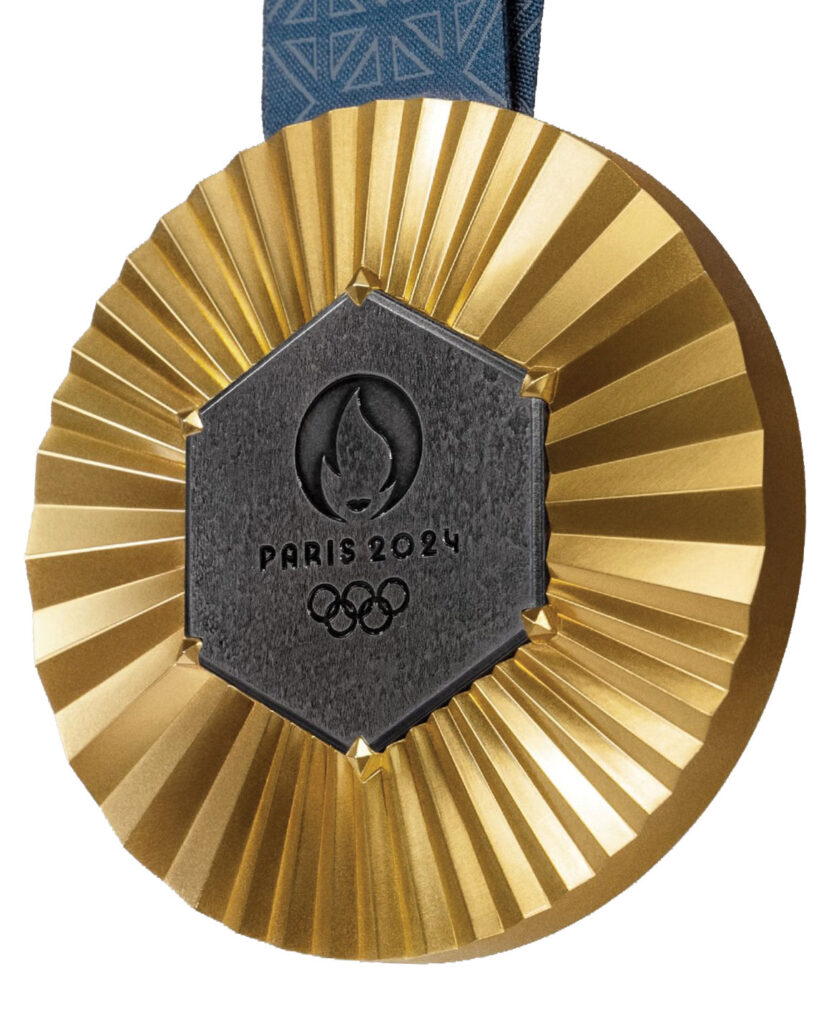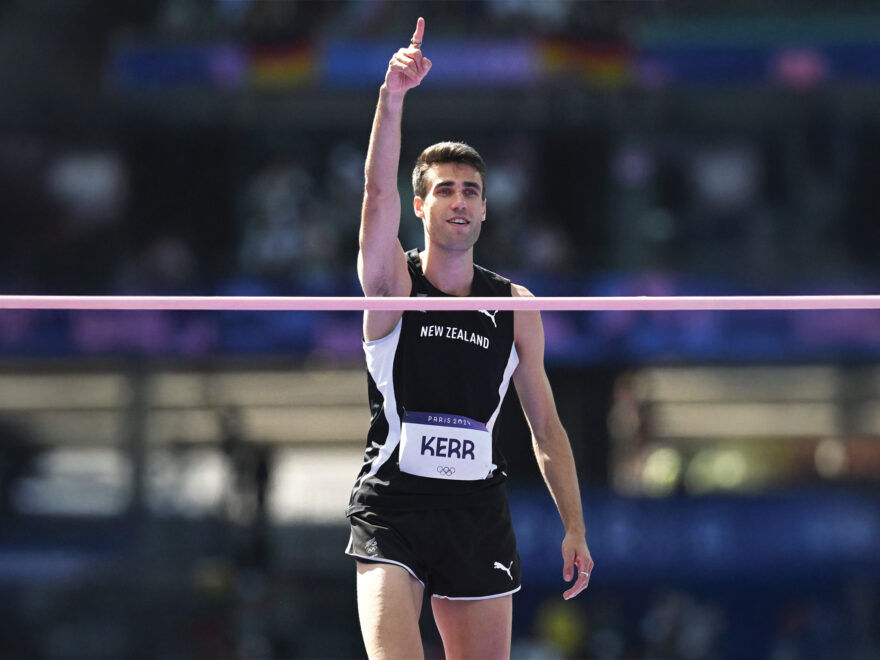How Hamish Kerr took the huge leap to Olympic gold
When Hamish Kerr and his team plotted their 2024 campaign, it was all about a golden outcome. MARC HINTON reports on a plan that came together beautifully.
As Hamish Kerr looks back on one of the great years of New Zealand track and field history – up there with Kiwi legends such as Peter Snell, John Walker and Valerie Adams – the lanky Olympic gold-medal winning high jumper has no doubt that it was all the culmination of a well thought-out plan coming together.
And come together it did as the 28-year-old Christchurch-based Aucklander produced a 2024 season for the ages, grabbing the world indoors title in March, completing a majestic buildup campaign that included a trio of Diamond League victories, and then enthralling the world in Paris with an epic head to head with American Shelby McEwen that saw the Kiwi claim the Olympic gold medal after a dramatic jump-off.

A world title and Olympic gold in the same year is some achievement. Dame Valerie did it twice, in 2008 and ‘12, but no Kiwi male had achieved the special double. And with his captivating charge to the victory at the Paris Games, Kerr also became the first New Zealand male field eventer to stand on the top of the dais at sport’s flagship event.
Who saw it coming? Well, Kerr and his team certainly did as, late in ‘24, he recounts the backdrop to his season for the ages.
Kerr had hardly set the world on fire on the international stage prior to 2024, though he had been chipping away, steadily improving his PB, and national record, after making a 2018 move from his hometown Auckland to Christchurch to train under top Kiwi jumps coach Terry Lomax. He had had his moments, grabbing world indoors bronze and Commonwealth Games gold in ‘22, but in his two tilts at the outdoor world championships, in Eugene, Oregon, in ‘22 and Budapest, Hungary, in ‘23 the long-striding 1.98-metre Kiwi had failed to make the final. That hurt.
So after Budapest, Kerr decided to make a crucial change-up in his team, and bring in close friend James Sandilands as his principal coach, shift Lomax into an advisory role, and re-align his support group. Along with the change in personnel came a shift in thinking.
“We came together around November-December in ‘23, and we drew a pretty clear line in the sand that we wanted to be very intentional with everything we did,” reflects Kerr. “We wanted to set a really high standard in training and competing around consistency, and what we were trying to get out of each competition. It was all about enabling me to do the best I could at the Olympics. We weren’t worried about outcomes … it was all around the process and what we could get out of it.”
It worked. What’s more Kerr started winning. And winning. His confidence soared. His technique was solid. His processes were on point.
“It was just a really good plan we put together,” he adds. “We worked really hard on it, and ultimately you look back and think it was probably the most simple year I’ve ever had in terms of what I was focused on and my mindset, but also the results we got from it were just amazing.”
You ask about the decision to bring in “best mate” Sandilands for Lomax. Kerr smiles, and acknowledges it broke one of the cardinal rules of business. It was “scary” doing it so close to a Games, but, in hindsight, was one of those sliding doors moments that produced exactly the result sought.
“It was tough at the start but once that hard work had been done I couldn’t have imagined how good that relationship would be, not just with Jimmy, Terry and myself, but the rest of the team. The key distinction [with James] was we had lived together for two years, and in that environment it’s more than friends. It wasn’t like we hadn’t experienced conflict or hard discussions.”
And through the ‘24 campaign Kerr felt a resilience building that would ultimately pay huge dividends. At the world indoors in Glasgow, with gold ensured, he elected to jump on and, with a final attempt, establish a 2cm PB and national record with 2.36 metres.
“The key thing was not shying away from hard situations. I’d just won my first global medal, having jumped 2.31, then going for a 2cm PB, having already won the competition … I didn’t need to do that. I looked back on it as a sign of intent, and proof of my belief I was one of the best. It showed my mental strength.
“We looked back on that moment a lot, on the third attempt in [Olympic] qualifying (where he had to clear 2.20 on his third and final attempt just to stay in the event), and the final jump-off … they were hard, but I used the tools I had to get through that.”
Kerr is adamant he wouldn’t have secured Games gold without the belief afforded by his world indoors title. “I got very used to fighting for wins,” he adds. “It changes your mindset.”
And now he’s an Olympic champion, how does it alter his mindset for ‘25, when he will chase world titles both indoors (in China) and out (in Japan) as the hunted, rather than the hunter?
Bring it on, he smiles. “I’ve proved I’m a high-pressure guy, and that’s something I’ll relish.”

